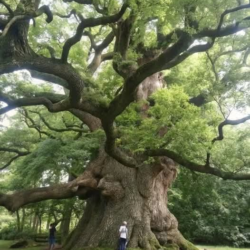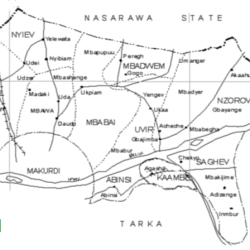The Tree of Tule, located in the town of Santa María del Tule in Oaxaca, Mexico, is a natural wonder that holds the title of having the largest trunk circumference in the world. This giant Montezuma cypress (Taxodium mucronatum), known locally as “El Árbol del Tule,” boasts a breathtaking trunk circumference of nearly 60 meters (196 feet), requiring around 30 people holding hands to fully encircle it.
Standing at a majestic height of 42 meters (137 feet), the Tree of Tule is not just impressive in size but also in age. Experts estimate the tree to be approximately 2,000 years old, making it a living testament to ancient history and a significant cultural symbol in Mexico. Some studies suggest it could even be older, potentially dating back as far as 3,000 years.
A Sacred and Cultural Icon
The Tree of Tule is deeply rooted in the traditions and spiritual life of the local community. The Zapotec people, indigenous to the region, regard it as a sacred being. Legends surround the tree, with some attributing its planting to a priest of the wind god Ehécatl. It continues to inspire reverence and admiration, drawing visitors from around the world.
Biodiversity and Preservation
This extraordinary tree is not only a marvel of size but also a vibrant ecosystem. Its immense trunk and canopy provide habitat for various bird species, insects, and other wildlife. Over the years, conservation efforts have been put in place to ensure its protection, as urbanization and climate changes pose challenges to its longevity.

Visiting the Tree of Tule is a humbling experience, allowing one to witness the grandeur of nature and connect with a piece of Earth’s living history. It stands as a powerful reminder of the resilience and beauty of the natural world.


















